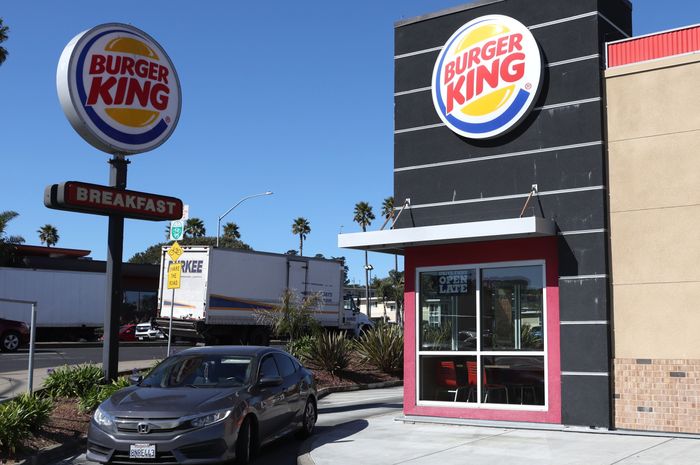This article is reprinted by permission from NerdWallet.
You can’t control oil prices, but you can control how you buy gas and how you drive. By making a few simple changes, you can reduce costs and squeeze more miles out of each gallon of precious fuel.
As the Russia-Ukraine conflict has escalated, national gas prices have jumped 88 cents in the last month to a national average of $4.34 a gallon, according to AAA. And the upward trend is expected to continue as the effects of the Russian oil embargo take hold.
While this might give you a sense of helplessness, there are ways to reduce the impact of rising gas prices that are available to anyone willing to do a little planning and research. The strategy is simple: Buy gas smarter — finding the lowest local prices and using rewards credit cards — and fine-tune your driving skills.
“Consumers cannot control gas prices, but they can control driving their vehicle more efficiently,” says David Bennett, AAA’s manager of repair systems.
By combining buying and driving techniques, you will save money and know that you’ve done all you can.
Search for cheap gas and discounts
It only takes a minute to find the lowest gas prices in your area with Google GOOGL, -0.02% Maps or popular apps such as GasBuddy; that’s especially important with prices in some areas rising daily.
Good read: Meet the boss who gave his workers a raise to help pay higher gasoline prices
In many cases, rewards programs and discounts may make your choice easier.
For example, GasBuddy offers a free rewards card to earn gas by shopping at participating businesses. Warehouses such as Costco COST, -1.04% often have reduced gas prices. Some grocery store chains, like Kroger KR, -0.25% and Safeway, also offer fuel discounts through rewards programs.
More: Save money on gas with these 6 apps
And when you combine that with paying with a rewards credit card, the savings add up.
Credit card experts advise drivers to look for a gas rewards card that delivers savings on more than just gas. You’ll need to tailor the card to your spending, but some offer as much as 5% back at the pump.
Buy regular rather than premium
It’s important to start your gas savings plan by purchasing the right grade of fuel.
While premium gas is recommended for many cars, particularly luxury vehicles, they will still run well on regular gas. This saves 50 cents a gallon, or $7 on a typical 14-gallon fill up, according to AAA. If your car requires premium, that will usually be clearly printed on your car’s gas cap.
Some vehicles may be slightly less efficient on lower-octane fuel, but not enough to outweigh the big savings.
Don’t miss: Gas theft is on the rise—how to protect your car
Hone your driving skills
If you are willing to change your driving style, you can travel farther on a tank of gas, says Car and Driver technical editor Dan Edmunds.
“Don’t always try to win the drag race off the line” at stop lights, he says. Becoming a smoother driver won’t slow you down, and it will save a measurable amount of gas.
“In racing, when the driver is trying to save fuel, they use a technique called ‘lift and coast,’” he says. In traffic, this would mean looking farther down the road and anticipating stop lights rather than staying on the gas and then braking hard.
A real-world test Edmunds performed, using three different vehicles on a California highway, showed that the difference between aggressive and smooth driving could provide a 35% reduction in fuel consumption.
The fuel economy test also stressed the importance of:
- Using cruise control to stay at a steady speed and avoid midrange accelerations.
- Removing roof top storage boxes to reduce aerodynamic drag.
- Shutting off the engine if you’re going to be parked for more than a minute.
And if your car has a start/stop feature, which shuts off the engine when you come to a complete stop, don’t disable it, Edmunds says. A study by AAA, conducted when gas was only $3.65 a gallon, found that the start/stop feature saved $179 a year over 15,000 miles of driving.
Change your routine
Short trips in a car are especially inefficient because the engine hasn’t reached the operating temperature. To avoid multiple short trips, combine errands and drive to the farthest destination first. Then, the engine will be hot and the other legs of the journey will be more economical.
Here are other things you can do to conserve gas and limit the use of your car:
- Leave early to avoid traffic backups.
- Walk to nearby destinations.
- Avoid idling in chain restaurants’ drive-through lanes.
- Ride your bike or consider getting an e-bike for shorter commutes.
- Work from home when you can.

Idling in the drive-thru could be costing you.
Getty Images
Think about the big picture
If you think that buying a car that’s smaller — or even electric — will save you money, think again. It’s not a great time to buy a car now — and it’s especially not a great time to buy a car in reaction to what might be a short-term spike in gas prices.
Also see: Electric van, anyone? Here’s what’s out there now, and coming soon
New cars on the dealer’s lot sell for thousands of dollars over sticker. You could order directly from the factory, but prices may come down again before your new ride arrives. Consider refinancing the car you’ve got and put the extra money saved in your tank.
More From NerdWallet
Philip Reed writes for NerdWallet. Email: [email protected]. Twitter: @AutoReed.






